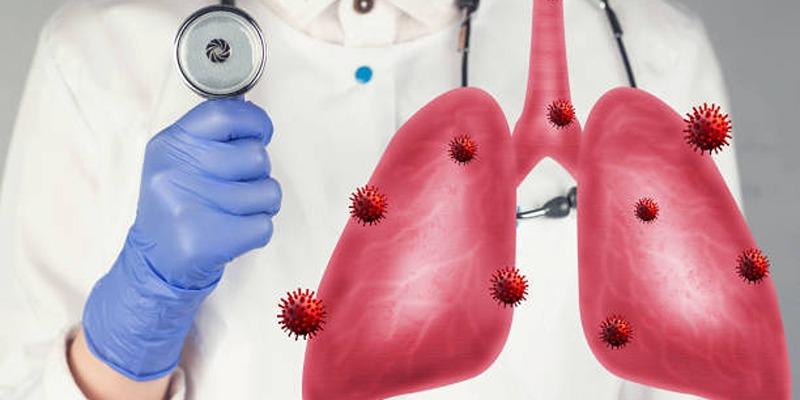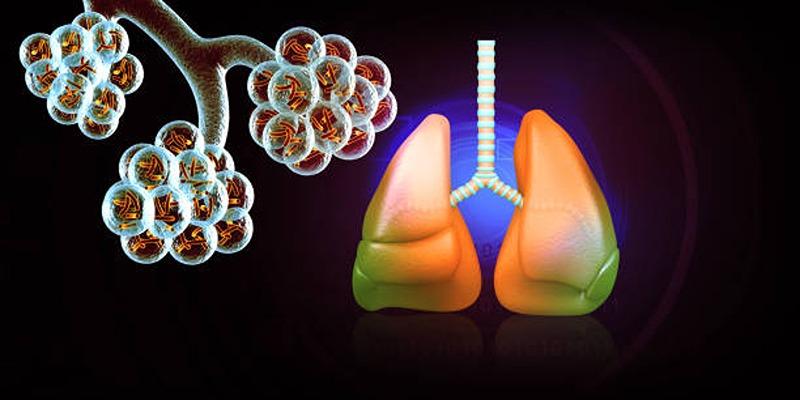Understanding Tuberculosis: What Are the Key Causes?
Tuberculosis is a dangerous communicable disease that performs in the lungs but can also affect other organs including the kidneys, spine and the brain. Tuberculosis is a bacterial disease prompted by Mycobacterium tuberculosis, and it is airborne: one catches it when an infected person speaks, coughs, or sneezes. Some of the conditions that predispose people to fall sick with TB are; immune compromised individuals; those with poor nutrition especially protein energy malnutrition; and those living in densely populated or poor hygienic conditions.
What is Tuberculosis?

Tuberculosis (TB) is an infectious disease caused by the Mycobacterium tuberculosis bacterium. Primarily affecting the lungs, it is a respiratory illness that can spread to other parts of the body, such as the brain, spine, or kidneys, if not diagnosed and treated early.
Types of TB
- Latent Tuberculosis: At this stage the bacteria are present in the body without producing any signs and symptoms of the diseases. But they can become active later in life if the immune system is compromised.
- Active Tuberculosis: This form is easier to diagnose, and the signs are visible some of which include; cough, fever, night sweats and unexpected loss of body weight.
How Is Tuberculosis Transmitted?
TB is passed through droplets in the air from the voice, cough or sneeze of a person who already has active TB disease. These particles can be inhaled and this results in infection most specifically in those who have extended close contact with the infected person. However, TB cannot be contracted by touching people, by contact with contaminated food or even by handling utensils that have already been soiled by the germs.
Causes and Risk Factors of Tuberculosis:
1. Bacterial Infection
The primary cause of tuberculosis is the bacterium Mycobacterium tuberculosis. These bacteria are highly resilient and can survive in the body for years without causing symptoms. Once the immune system becomes compromised, the bacteria can multiply and lead to active TB.
2. Weakened Immune System
A robust immune system is crucial for keeping latent TB bacteria inactive. Individuals with weakened immune systems are at a higher risk of developing active TB. Factors that can weaken the immune system include:
- HIV/AIDS: People living with this condition are more susceptible to TB.
- Chronic illnesses: Conditions like diabetes and kidney disease can reduce immunity.
- Malnutrition: Poor nutrition compromises the body’s ability to fight infections.
3. Close Contact with an Infected Person
Prolonged exposure to someone with active TB increases the risk of infection. This is especially true in crowded or poorly ventilated environments such as prisons, refugee camps, or healthcare facilities.
4. Poor Living Conditions
Living in overcrowded spaces with inadequate ventilation facilitates the spread of TB. This is a significant concern in low-income regions where access to proper housing and sanitation is limited.
5. Lack of Vaccination
The Bacille Calmette-Guérin (BCG) vaccine provides protection against TB, particularly severe forms of the disease in children. Lack of vaccination increases the risk of contracting the disease.
6. Age and Gender
While TB can affect people of all ages, certain demographics are more vulnerable. Children under five years of age and older adults have a higher risk of developing TB due to weaker immune systems. Additionally, in some regions, men are more likely to develop TB than women, possibly due to differences in exposure and health-seeking behavior.
7. Smoking and Air Pollution
Smoking damages lung tissue and impairs the body’s ability to fight infections, making smokers more susceptible to TB. Similarly, exposure to indoor air pollution from cooking with biomass fuels or outdoor air pollution increases the risk of respiratory infections, including TB.
Signs and Symptoms of Tuberculosis:
Tuberculosis (TB) symptoms differ based on whether the infection is latent or active. In cases of active TB, common signs to watch for include:
- A persistent cough lasting over three weeks
- Coughing up blood or mucus
- Unexplained weight loss
- Fever accompanied by chills
- Night sweats
- Persistent fatigue and weakness
- Loss of appetite
Tuberculosis Diagnosis
Diagnosing tuberculosis (TB) requires a combination of tests and evaluations to ensure accuracy. Key diagnostic methods include:
- Tuberculin Skin Test (Mantoux Test): A small amount of tuberculin is injected just beneath the skin, with the reaction evaluated 48 to 72 hours later.
- Blood Tests: These tests assess the immune system’s response to TB bacteria, offering valuable insights.
- Chest X-rays: Used to identify lung abnormalities or damage caused by TB infection.
- Sputum Analysis: Examining mucus expelled from the lungs helps confirm the presence of TB bacteria.
Tuberculosis Prevention
Preventing TB is essential to controlling its spread and safeguarding public health. Key strategies include:
1. Vaccination
The Bacillus Calmette-Guérin (BCG) vaccine is a cornerstone in the fight against tuberculosis (TB), particularly for protecting children from severe forms of the disease, such as TB meningitis. Expanding vaccination programs in high-risk regions and ensuring widespread coverage can drastically curb TB prevalence. Meanwhile, global health efforts continue to prioritize the development of more advanced and effective TB vaccines.
2. Early Detection and Treatment

Preventing latent TB infections from progressing to active, contagious disease is vital. Screening high-risk groups—such as healthcare workers and individuals living with HIV—enables early diagnosis and intervention. Prompt treatment of active TB cases with the correct combination of antibiotics not only cures the patient but also minimizes the risk of disease transmission. Adherence to treatment regimens is critical to preventing drug-resistant TB, a growing global concern.
3. Improved Living Conditions
Overcrowded housing, poor ventilation, and lack of basic sanitation create ideal conditions for TB to spread. Addressing these issues by providing adequate housing, improving airflow in indoor spaces, and ensuring access to clean water and sanitation can significantly reduce transmission rates. Focused interventions in low-income and densely populated areas can make a meaningful difference in controlling the disease.
4. Public Awareness
Raising awareness about TB symptoms, transmission, and prevention is essential for early detection and treatment. Public education campaigns can encourage individuals to seek medical attention at the onset of symptoms, such as a persistent cough, fever, or unexplained weight loss. Additionally, reducing the stigma surrounding TB plays a crucial role, as fear and discrimination often prevent people from seeking help or disclosing their condition.
5. Infection Control in Healthcare Settings
Healthcare facilities are hotspots for TB transmission, especially for staff and patients with weakened immune systems. Implementing robust infection control measures—such as isolating patients with active TB in well-ventilated rooms, equipping staff with proper protective gear like masks, and maintaining strict hygiene protocols is essential. Training healthcare workers to recognize TB symptoms early and follow established guidelines further reduces the risk of outbreaks within medical facilities.
Treating Tuberculosis
With proper medical care, tuberculosis (TB) is both treatable and curable. Treatment typically involves a carefully prescribed combination of antibiotics taken over a six- to nine-month period. The most commonly used medications include:
- Isoniazid
- Rifampin
- Ethambutol
- Pyrazinamide
Conclusion:
Tuberculosis remains a significant global health challenge, but understanding its causes and risk factors is an essential step toward controlling and eventually eradicating the disease. Addressing issues such as weakened immune systems, poor living conditions, and lack of vaccination can significantly reduce TB’s prevalence. Early detection, timely and effective treatment, and increased public awareness are equally vital in combating this infectious disease.












